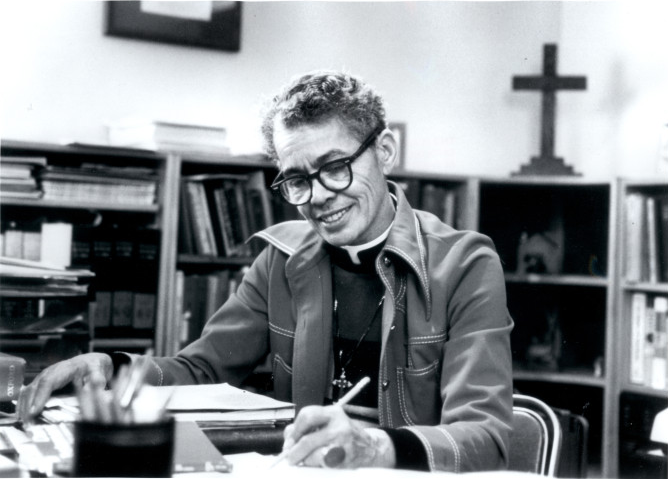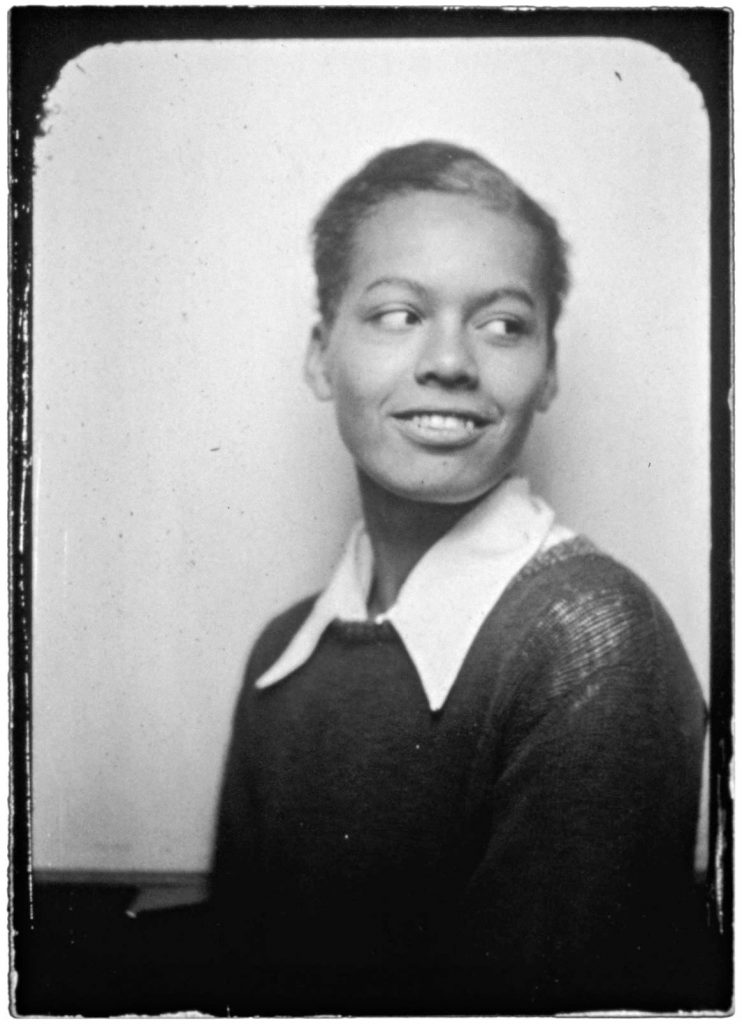Documentary Review: “I Am Pauli Murray”
[Editor’s Notes:
- This post is the second installation in our weekly Black History Month series, which will appear on Thursdays in February in addition to our normal Tuesday and Saturday blogs.
- There has been much discussion and debate around the correct use of pronouns when discussing the life, work, and personhood of Pauli Murray. Pauli’s gender identity was complex and evolved over Pauli’s life, and it is difficult to map current understandings of gender identity (including trans identity) onto a historical person. We encourage you to read this page on the topic from the Pauli Murray Center for History and Social Justice, which provides some important context.
- The incredible life of Pauli Murray has been featured on this blog before! You can read that post here.]

I discovered Pauli Murray while listening to Terri Gross’ interview of historian Rosalind Rosenberg, author of Jane Crow: The Life of Pauli Murray. Pauli—who was born in 1910 and died in 1985—coined the term “Jane Crow” as she came to understand the close correlation between racial discrimination and gender discrimination. When I read this 517 page book (followed by Pauli’s 614 page autobiography and her poetry book Dark Testament), I knew that a documentary about Pauli Murray was sorely needed.
Directors Betsy West and Julie Cohen found so much material in Murray’s archive at Harvard’s Schlesinger Library that they felt overwhelmed to tell her story in two hours. It was similar to how I feel when a movie takes a great book and distills it into two hours; I was keenly aware of what was left out, but also happy that the documentary provided a very good introduction to Pauli. It also provides a balanced look at a brilliant Black woman whose nonstop battle against the constraints of injustice took its toll on her and led to ongoing struggles with mental health. During her life Pauli kept these struggles—as well as her internal struggles with her gender identity—private. In the documentary, Rosenberg says that she struggled with the decision to tell the whole story and decided it all needed to be told.
The documentary shows us that Pauli was very adventurous and curious but also very spiritually grounded. She never pursued riches, only justice, which often left her poor in money but rich in relationships. One interviewer called her a “lawyer turned poet,” but she corrected him to say “I am a poet turned lawyer.” Orphaned at the age of three, she was sent to live with her godmother Aunt Pauline in Durham, North Carolina. There, she was raised in a home that included her maternal grandparents, Cornelia and Robert Fitzgerald. Her grandmother Cornelia was born into bondage. Her grandfather Robert was raised in Pennsylvania, attended anti-slavery meetings with Harriet Tubman and Frederick Douglass, and fought for the Union in the Civil War. Together, they formed part of a large and close-knit Black family which eventually led Pauli to write Proud Shoes: The Story of an American Family about her family’s history, which the Smithsonian’s National Museum of African American History and Culture considers “a classic in African American genealogy.” Pauli culminated her life’s journey with her ordination as the first Black woman Episcopal priest, and celebrated her first Eucharist at the same church where her grandmother Cornelia was baptized while living as an enslaved person.
In her book Be The Bridge: Pursuing God’s Heart for Racial Reconciliation, author Latasha Morrison says: “When we lack historical understanding, we lose part of our identity. We don’t know where we came from and don’t know what there is to celebrate or lament. Likewise, without knowing our history, it can be difficult to know what needs repairing, what needs reconciling.” When this documentary becomes more widely available, it will bring the gift of the Reverend Dr. Pauli Murray to the masses as an important bridge from America’s past to its future.

